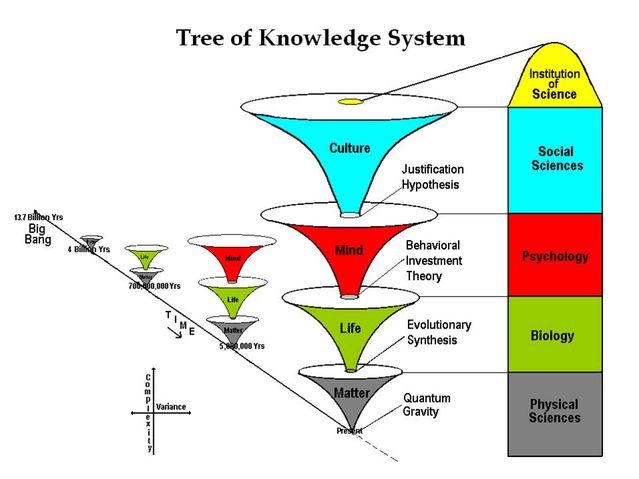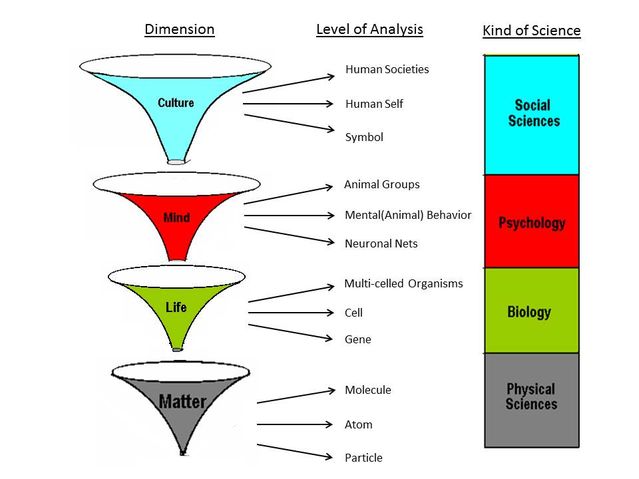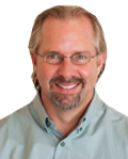Health
Moving From the Biopsychosocial Model to the ToK System
The ToK System advances and clarifies the biopsychosocial model.
Posted October 30, 2015
The previous blog briefly reviewed George Engel’s famous proposal for medicine to adopt a biopsychosocial lens. Being a holistic thinker, I support Engel’s call for medical professionals in general and psychiatrists in particular to have a broad meta-framework for thinking about human health and illness. However, I also agree with the critics that the biopsychosocial model in medicine has limitations and weaknesses. In particular, there are two major critiques: 1) the model is too broad for medicine proper and 2) the boundaries between the biological, psychological, and social domains are fuzzy and, indeed, are generally ill-conceived because it misses the key insight that there are dimensions of complexity in nature. In this blog, I show how the ToK System represents a necessary advance over the biopsychosocial model.
Medicine versus Health
What is the scope of medicine? The answer to this question is crucial to addressing the limits of the biopsychosocial model for medicine. The short answer is that medicine is not everything—medicine is not even everything pertaining to human health and illness. Instead, medicine should be conceived as a subset of the allied health professions. One way to see this is to consider the fact that there are many other health professions—such as nursing, health service psychology, counseling, occupational therapy, and so forth—that are not medical professions. Thus, although medicine and medical doctors are often thought of as the primary or dominant health professionals, when one considers all the various allied health disciplines, one realizes that medicine is a subset of the health professions, rather than being synonymous the whole of human health. From this view, medicine has a particular role in human health—namely it is concerned with the biological dimension of functioning. Thus, I agree with Engel that medical doctors, including psychiatrists, should have a broad appreciation for the various levels of analysis in human behavior. However, as alluded to in the previous post, their job is not and cannot be the whole of human health.
For a clear picture of this claim, here is a view of the levels in nature from an excellent book by Kennon Sheldon called Optimal Human Being. The primary focus of this book is on generating a holistic conception of optimal human functioning. This depiction makes it is clear that medicine is not everything, but rather is a discipline that focuses on one domain of analysis in the broader picture.

Levels vs. Levels AND Dimensions
The second major problem with the standard biopsychosocial framework is that the levels of analysis and their interrelation are extremely murky. Perhaps the clearest evidence for how confusing the relations are between the levels is to ask the basic question: What is psychology and how is it defined in relationship to biology (presumably from below) and the social sciences (presumably from above)? Given that the formal discipline of psychology has been around for more than one hundred and twenty five years and that their remains no clear conception of the field’s subject matter, one can be quite confident in one’s assertion that the relations between the levels are very murky and depend enormously on one’s paradigm.
Another problem with the biopsychosocial model is that the role and place of the physical universe is not at all clear. Is the physical subsumed within biological? In the previous blog, I used the example of a man, Joe, strenuously shoveling snow, resulting in a heart attack. Does the snow storm or the mechanics of snow shoveling fit into the biopsychosocial model? If so where?
The point here is that a second reason that the biopsychosocial model fails is because it does not offer a fully comprehensive and clear picture of nature. It helps scholars and health professionals keep in mind that there are different levels in nature, which is useful. But it turns out that there are also different dimensions in nature. Early scientists like Newton thought that the natural universe was just matter in motion. However, we now realize that conception was flawed. The universe is an unfolding wave of energy and information. And because there have evolved different systems of information processing (genetic, neuronal, linguistic) there are fundamentally different dimensions of existence (Matter, Life, Mind and Culture) with different causal forces at play other than just matter in motion.
Enter the Tree of Knowledge System
The ToK System provides the necessary framework to advance the standard biopsychosocial model. The first point to make is that rather than being a framework for medicine (even broadly conceived), it is instead constructed as a framework for understanding scientific knowledge in general. Thus, it is a framework for all scholars, ranging from physicists to anthropologists, and including the allied health professionals like medical doctors, health service psychologists, and social workers.

Although scholars from all disciplines need a meta-perspective to understand where they fit into the knowledge scheme, it is also the case that we need specialists to scientifically investigate different parts of reality depicted on the map. So we need medicine, the role of which is to understand the bio-physiological dimension of human functioning and to heal and repair harmful malfunctions stemming from injury and disease. The ToK System thus resolves the dispute in medicine as to whether it should operate foundationally from a biopsychosocial or bio-medical model. Like all scientific disciplines, scholars and practitioners of medicine should have a physical-bio-psycho-social conception of the human condition depicted by the ToK, which is akin to the essential point made by Engel and his ilk. And they should recognize that their particular “home” is in the functioning and malfunctioning of biology, which is the central point of the biomedical training model.
Perhaps the most important thing to understand is that, with its depictions of the dimensions and levels of complexity (see figure below), the ToK System solves the problem of boundaries. The evidence for that is found in how it defines the field of psychology in relation to biology and the social sciences, thus conceptually resolving one of the greatest puzzles in the history of scientific knowledge. With the fuzzy boundary problem solved in far greater detail than the historical biopsychosocial conception, the ToK System allows for a much deeper understanding of nature and the sciences and professions that attempt to map and alter it.





